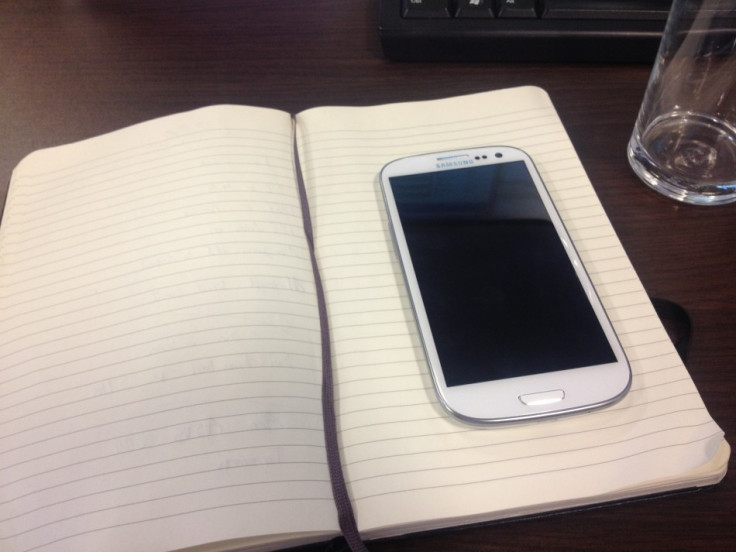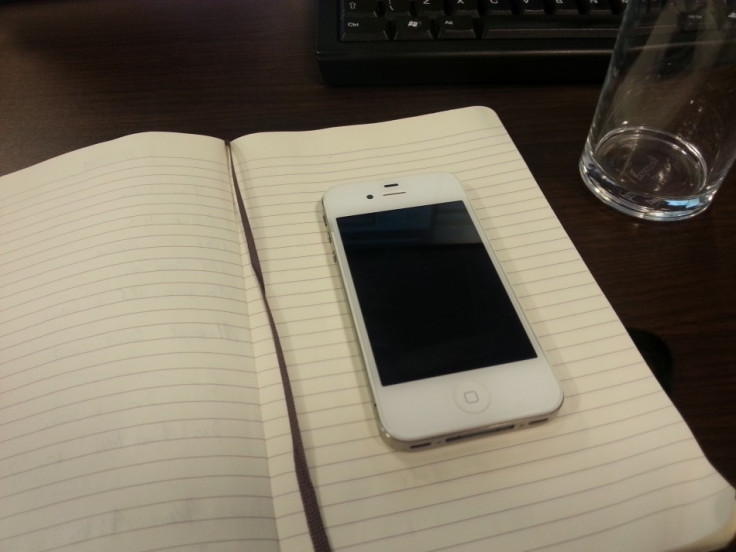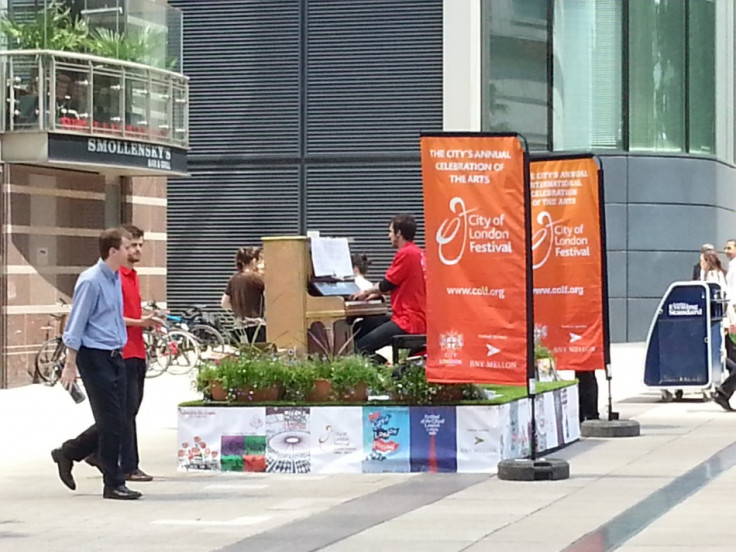iPhone 4S vs Galaxy S3

iPhone 4S vs Galaxy S3: Introduction
The iPhone has enjoyed an almost non-stop reign at the top of the smartphone podium since its 2007 launch, and while the HTC Desire and Samsung Galaxy S2 helped Android gain ground, it hasn't been until the HTC One X and the Galaxy S3 came along that the iPhone finally had some stiff competition.
Launched in October 2011, the iPhone 4S is the latest and greatest that Apple has to offer, and brought with it iOS 5, iCloud and the voice-activated personal assistant Siri.
The Samsung Galaxy S3 only arrived on the market in May, after being treated to a product launch event shrouded by Apple levels of secrecy and hype.
We look at both smartphones to try and work out which one you should buy.
Key Features
Apple iPhone 4S
- iOS 5
- Siri
- 3.5in Retina Display, 940 x 640, 326ppi
- iCloud
- 8-megapixel camera with LED flash and HD video
Samsung Galaxy S3
- Android 4.0 (Ice Cream Sandwich)
- S-Voice
- 4.8in Super AMOLED screen, 1280 x 720, 306ppi
- 8-megapixel camera with LED flash and HD video
- Quad-core 1.4GHz processor
iPhone 4S vs Galaxy S3: Design and Build Quality
The iPhone 4S's Gorilla Glass and aluminium construction means that it weighs slightly more than the larger Galaxy S3 (140g compared with 133g), but it does add a premium feel of quality that we think the Galaxy S3 misses out on.
We speak more about the lack of quality in our in-depth Galaxy S3 review, but can't help saying again that the use of a metal-look plastic band around the edge and flimsy plastic rear cover are a real disappointment for a phone costing more than £500.

Since its launch in 2007 the iPhone has come under fire for being fragile, with the Gorilla Glass cracking when dropped, so it's hard for us to say that one choice - plastic or glass - is distinctly better than the other.
Away from the argument of glass vs plastic, the Galaxy S3 is surprisingly thin for its enormous screen size, measuring in at 8.6mm compared to the iPhone at 9.3mm. That may not sound a lot, but it does help to make the S3 more pocket-friendly than it looks, and the tapered bezel helps to make the phone look even thinner than it is.
Typing with one hand does become a little uncomfortable, but this phone and the supersize HTC One X and One S show that a larger screen isn't too cumbersome after all.
As for layout, the two phones are remarkably similar and both offer a front-facing camera and two sensors for ambient light and proximity above the screen, and a central, physical Home button below.

The S3's Home button is flanked by a touch sensitive button on either side, while the iPhone makes do with just a single button.
Both smartphones provide volume buttons on the left edge, with the iPhone 4S offering a more industrial design with its individual buttons, compared to the Galaxy S3's single rocker.
The iPhone's physical mute switch is something the S3 misses out on - muting the Samsung requires either holding the volume down button or holding the screen lock button then tapping the silent option.
Most smartphones locate the screen lock/power button on the top right edge, but Samsung has placed the S3's on the right about a quarter the way down - this makes sense given the phone's size, as stretching to the top edge can be difficult for those with small hands, but remembering where the button is took some getting used to.

Despite our disappointment with the S3's plastic construction, Samsung has made the back cover removable, giving access to the battery, SIM card slot and microSD card slot - something the iPhone is sorely missing.
Apple has never allowed users to open the iPhone themselves - and has even gone to the extent of securing the rear glass with less commonly used screws to put owners off looking inside.
We all know smartphones struggle to last more than a day before needing a recharge and there is a market for larger capacity spare batteries, so it's a shame that Apple still refuses to allow the battery to be accessed.
Lack of expandable storage for the iPhone through a microSD card slot is also a shame, given that the Galaxy S3 can be upgraded by up to 64GB.

Around the back, both phones have an 8-megapixel camera with full 1080p HD video recording and LED flash. More than eight megapixels from the Galaxy S3 would have been welcome, as the S2 which it replaces also had an 8-megapixel sensor.
Overall, the iPhone wins in the design and build quality department, but this doesn't take into account either phone's screen.
iPhone 4S vs Galaxy S3: Screen
In our eyes, the Samsung Galaxy S3 and HTC One X have proved that larger screens are the way forward and, while we might not all be comfortable with the gigantic 5.3in screen of the Samsung Galaxy Note, the 3.5in iPhone is just too small.
Size isn't everything, however, and the iPhone's pin-sharp 326ppi pixel density goes some way to make up for this, but after just a day with the S3 going back to an iPhone feels cramped and a step backwards.
In testing we found both screens to be equally responsive and accurate, with both offering a neutral colour balance and even brightness, although the iPhone 4S goes slightly brighter than the S3, so is easier to read in bright sunlight.
Rather than using the Super AMOLED Plus technology seen in the Galaxy S2, the Galaxy S3 uses a Super AMOLED panel which uses a PenTile subpixel structure. This means that rather than each pixel having three subpixels (red, blue, green) they have two (alternating between red and blue, and blue and green).

In previous PenTile screens this has led to problems such as a distinct colour fringe between black and white text, and a blue hue coming from the screen.
Thankfully, due to the high pixel density and whatever tinkering Samsung has done under the hood, most of these problems have been eliminated - though there is still a slight blue hue when viewing the screen from an angle.
Although the iPhone 4S offers more pixels per inch, it's all but impossible to spot the difference in pixel density between the two phones, and as image quality is also indistinguishable the only difference worth considering is the size, and for this the Galaxy S3 wins by a landslide.
This isn't just because a bigger screen is better, but what a week with the S3 did was make us realise that the iPhone isn't big enough, and while the Galaxy Note isn't for everyone, the S3 strikes a good balance between the two.
iPhone 4S vs Galaxy S3: Camera
Both smartphones use an 8-megapixel camera with 1080p HD video recording and an LED flash and offer similar image quality, but where the iPhone offers no more than HDR (high dynamic range), a grid overlay and control of the flash, Android Ice Cream Sandwich on the Galaxy S3 has a huge range of features and settings.

You can shoot photos in HDR to capture scenes with high and low lighting in the same frame, burst mode - which shoots eight photos in around three seconds, then picks the best - and the usual range of monochrome and sepia effects.
White balance, metering and ISO can all be adjusted manually, or left to work things out automatically, and there's 13 different scenes to choose from, ranging from sports and portraits, to shooting by candlelight or capturing fireworks.
The Galaxy S3 has a large range of settings in the camera app

Although there's a minimum of 16GB of storage on tap depending on which S3 you buy, the resolution of photos taken can be lowered from 8-megapixels to six, 3.2, 2.4, 0.9 or just 0.3-megapixel if you so wish.
As for video, the Galaxy S3 shoots in full 1080p HD, although that can be trimmed down to 720p or lower if you need to save space, while the white balance and exposure can be adjusted and photos can be taken while you shoot video.
The iPhone offers very little in the way of camera settings and features.

Both phones can use the LED flash to illuminate the scene while shooting video and both camera apps have a shortcut on the lock screens.
The S3 can take photos while shooting video at the same time, and zoom while taking video, neither of which the iPhone can do.
Capturing a photo by tapping the screen can be difficult, and thankfully the iPhone 4S lets you press the volume up button, allowing you to hold the phone like a traditional camera - but this wasn't always the case, and is a fix that means the lens is easily obscured by your hand while reaching for the button.
On the Galaxy S3 the volume rocker is used to zoom in and out, but you have to tap the on-screen icon to take a photo.
As you can see from our sample photos at the end of this comparison, the Samsung Galaxy S3 produces sharper images with more contrast than the iPhone, which took photos that seems washed out and lacking in definition. Photos taken with the iPhone are warmer, while the Samsung's are on the cool side, but the added temperature of the iPhone looks most unnatural.
The quality of photos and large range of settings and features available makes the Galaxy S3's camera the winner in our eyes, although the iPhone does zoom in further, albeit with reduced quality.
iPhone 4S vs Galaxy S3: Connectivity and Hardware
Both smartphones get Wi-Fi in all a/b/g and n variants, along with Bluetooth with A2DP for streaming music to wireless headphone and speakers, but the Galaxy S3 edges ahead due to having NFC for contactless payments and the universal microUSB port.
Apple's reliance on the bespoke 30-pin dock connector port has served it well since first introduced withe the second generation iPod back in 2002, but now most of the phone industry has moved from all offering different ports, to (mostly) unifying with microUSB, and we feel that Apple should now do the same.

Having said that, sticking with the 30-pin connector for so many years means that there's a huge number of accessories available for the iPhone and iOS range as a whole
While the iPhone misses out on NFC for now, we're confident that Apple will include the technology with the next iPhone, as the new Passbook app in iOS 6 claims to offer a one-stop-shop solution to carrying tickets, coupons and store cards.
As mentioned previously, the S3 has an microSD card slot under the rear cover, unlike the iPhone that has to make do with the 16, 32 or 64GB or internal storage that it comes supplied with.
To make it stand out from the smartphone crowd Samsung has given the Galaxy S3 a range of features aimed at making your life easier. These include Smart Stay, which keeps the screen on when you're looking at it, but turns it off when you turn away.

The S3 also uses face recognition to unlock the phone, although as we have found, this can be tricked with a photograph of whoever it's set up for.
iPhone 4S vs Galaxy S3: Performance and Operating System
Apple is reluctant to reveal much about its dual-core A5 processor, as used in the iPhone 4S and iPad 2, so while we know of the two cores, the speed that it runs at is unknown, although the clever money says around 1GHz.
Samsung is much more open about the performance of its Galaxy S3, which has a quad-core 1.4GHz processor with 1GB of RAM (the US model gets a massive 2GB, but the processor is a 1.5GHz dual-core unit).

Although beaten comprehensively on paper, the iPhone 4S holds up well against the more powerful S3 in the real world, with both phones able to keep up with whatever we throw at them.
A neat way to show off the Galaxy S3's power is Pop Up Play, which lets you take the video you're watching and move it around the entire operating system in its own small window - useful when you want to play a game or answer an email while watching a video.
Pop Up Play lets you watch a video while doing something else, like playing a game.

Apple recently announced iOS 6 and said that it will be available for iPhone, iPad and iPod touch in the autumn.
We've got our hands on the beta of iOS and will bring an in-depth comparison between it and Android 4.0 Ice Cream Sandwich at a later date; for now though, it's iOS 5 that will be Apple's answer to Android 4.
Battery life is, as with most smartphones with the performance of the iPhone and Galaxy S3, limited to not much more than a day of average use.

Samsung claims that the S3's 2,100mAh battery is good for more than 200 hours of standby time and ten hours of talk time over 3G, but in the real world of calls, texts, Facebook and iPlayer, we'd suggest you charge it every night like any other smartphone.
Apple also claims 200 hours of standby time for the iPhone 4S, with a slightly less 3G talk time of eight hours. Again, you'll be lucky to see two fulls days out of the iPhone, so nightly charging is a must.
As for comparing Ice Cream Sandwich with iOS 5, it will always come down to personal preference; they both offer just about everything you could want from a smartphone.
The old story of Android being more open and accessible than iOS still rings true, and the counter argument that Apple's offering appeals to those who want all their tech under the same umbrella and to work together with minimal fuss is also true.
Both operating systems share some features - such as the drop down notification bar - and the number of apps available on Android is, while still behind Apple's App Store, ever increasing, with apps from major developers usually appearing on both platforms.

iPhone 4S vs Galaxy S3: S-Voice and Siri
Apple caused quite a stir when Siri was announced along with the iPhone 4S in October 2011, with some praising the 'humble personal assistant' for its understanding of informal language, while others criticised Apple for wasting time in loading Siri up with jokes and film references.

Despite some glaring omissions - like being unable to take a photo, launch an application or, worst of all, perform any location-based queries outside of the US - Siri is a tool that does just about everything you could ask of it.
Whether you want to issue spoken commands to your phone or not is something else, the point is that it works.
With the Galaxy S3 Samsung introduced its Siri competitor, S-Voice, and has taken a different approach; by sidelining the iPhone-lost-in-a-tequila-bar jokes and suggestions of where to hide a body, Samsung may have created an app that is more function than gimmick.

Sadly though, in our time with the Galaxy S3 we found S-Voice to be lacking and not a real rival for Siri; while the catalogue of what it can do is good enough, in the real world S-Voice had a hard time understanding what we were saying.
S-Voice is noticeably slower than Siri to come up with an answer, but does provide answers to location-based questions in the UK, which Siri will not be able to do until iOS 6 comes out in the autumn.
One trick S-Voice does have is the ability to be activated by voice and with no need to press a button, but a warning to the self conscious - this does involve saying "Hi Galaxy" to your phone.
Despite ditching the gimmicks, S-Voice doesn't understand the wide range of phrases that Siri does and feels like a less complete product.
No doubt Samsung will improve on S-Voice for future phones and through software updates, but with Siri getting a major update with iOS 6 in the autumn, we have to give this point to the iPhone.
iPhone 4S vs Galaxy S3: Value
Being at the top of the smartphone food chain doesn't come cheap, as both the iPhone 4S and Galaxy S3 start at around £500 for a SIM-free 16GB model, rising to £699 for a 64GB iPhone, while the 32GB Galaxy S3 is exclusive to Vodafone and can be had for free on contracts starting at £46 per month.
For more information on pricing, check out our buyers' guides for the iPhone 4S here and Galaxy S3 here.
Verdict
Picking a winner between these two smartphones is tough. Customers happy to get into the iOS and Mac ecosystem will love how everything on the iPhone 4S syncs with their Mac and other Apple devices, and iOS is very easy to use.
But on the other hand, the Galaxy S3 proves beyond doubt that a larger screen is better and that the iPhone is now too small.
On paper, the S3 is more powerful and the iPhone offers a better quality screen, but in the real world neither victory is noticeable.
Choosing between these two is tough and will always fall down to each buyer's personal opinion - and we doubt they'd be disappointed with either - but for us it's the Galaxy S3 that claims victory, thanks to that hugely impressive screen and Ice Cream Sandwich, which is starting to make iOS look dated.
With iOS 6 and a new iPhone due in the autumn, the pressure is back on Apple to produce something that will reclaim the top step of the smartphone podium.
Scores
Samsung Galaxy S3:
- Screen 10/10
- Camera 8/10
- Operating system 9/10
- Design 8/10
- Build quality 7/10
- Overall 9/10
Apple iPhone 4S:
- Screen 9/10
- Camera 7/10
- Operating system 9/10
- Design 9/10
- Build quality 8/10
- Overall 9/10
Sample Shots






© Copyright IBTimes 2025. All rights reserved.






















